All hot and bothered: 2021 British and Hungarian Grands Prix
The crowds were back, sprint qualifying made its debut and there were some spectacular knocks, says Mark Hughes
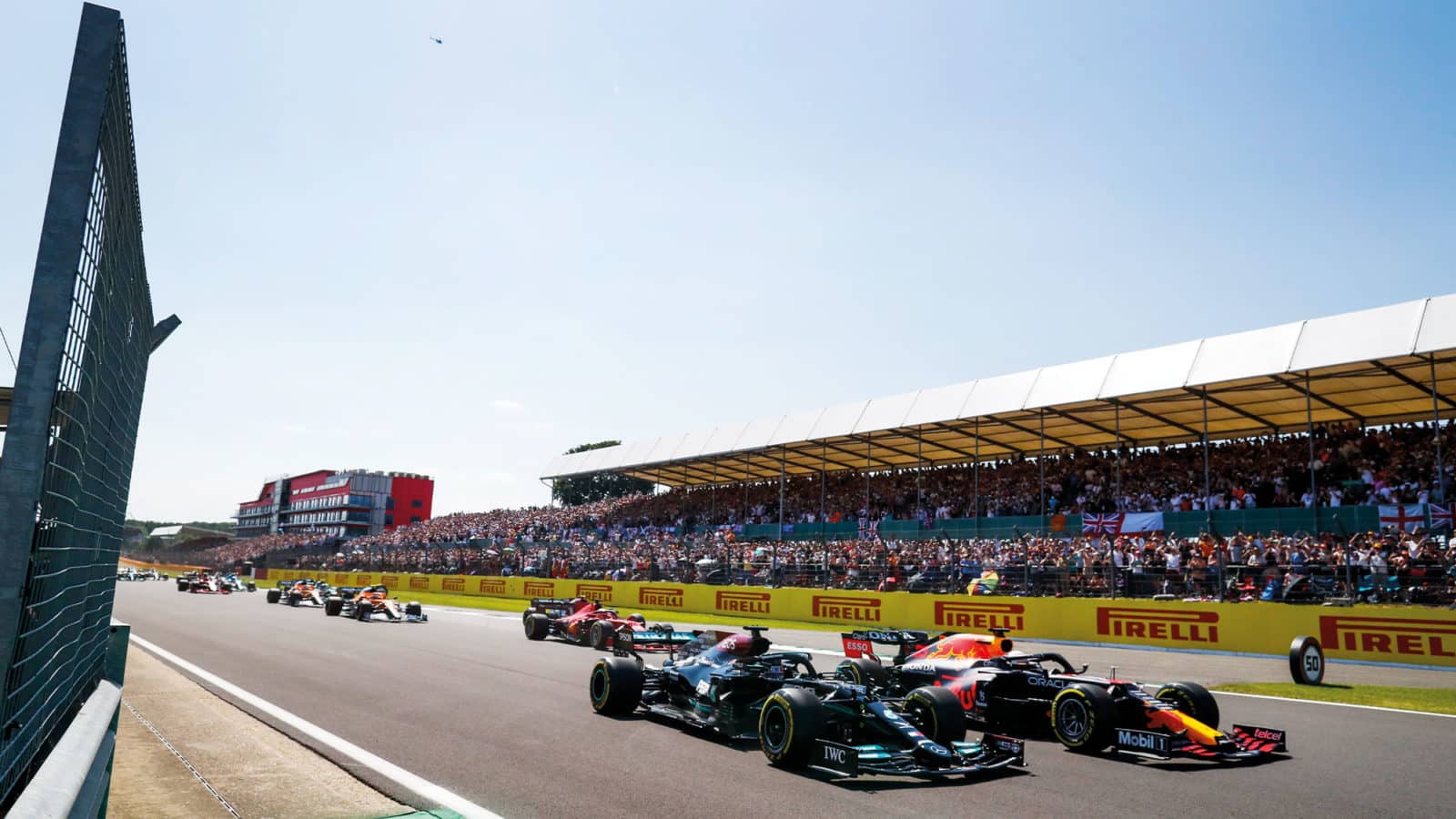
Antonin Vincent/DPPI
2021 British Grand Prix | 2021 Hungarian Grand Prix
In the narrative of the championship, this is where it got a little ugly, at Silverstone where the long-predicted on-track clash between title combatants Max Verstappen and Lewis Hamilton finally happened and in Hungary where a misjudgement from Hamilton’s team-mate Valtteri Bottas inadvertently took Red Bull out of contention.
There was an intriguing backstory to it all, a case study in how the competitive paranoia built by the close contest between Red Bull-Honda and Mercedes throughout the season had infiltrated all those organisations, just fuelling the fire. The contact between Verstappen and Hamilton at Copse Corner on the first lap of the British Grand Prix, which put Verstappen into a massive 51g impact with the barriers, was the almost inevitable crescendo to those building tensions.
It didn’t stop there, of course. Red Bull was furious about a Silverstone damage bill it estimated at £1.3m, which in the era of the cost cap is money that cannot be spent on making the car faster. It lodged with the FIA a petition to review the incident, which was heard during the Hungarian GP weekend and thrown out. It was against that backdrop that the Bottas incident then incurred yet more Red Bull expense – and a destroyed power unit.
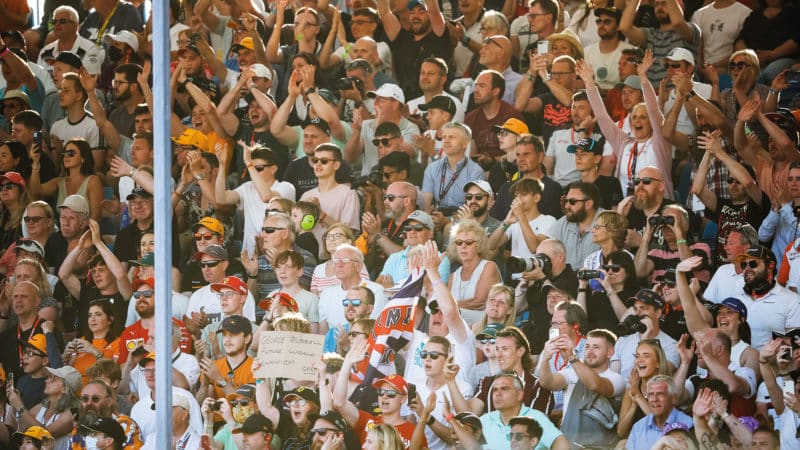
Business as usual at a full-capacity Silverstone, with 365,000 fans packing in across the weekend
Antonin Vincent / DPPI
First, there’s the story of how and why the two teams are so closely competitive this year after seven seasons of Mercedes domination. That’s partly to do with the great work done by Honda in its final season of F1, determined to go out on a high, and that of Red Bull in fully nailing the potential of its high-rake aero concept. But only partly. It’s also to do with the regulation downforce-reducing tweaks brought in for ’21 which ostensibly were to protect the Pirelli tyres, but which specifically hurt the low-rake Mercedes concept. There’s a belief at Mercedes that these regulations – especially the cutting of the diffuser strakes and rear brake ducts – were targeted at them, in the interests of a closer championship. Even if that’s true, it’s not something Red Bull has much sympathy for, given how regularly their wings were clipped by regulation in the pre-hybrid era of Red Bull domination.
“If Hamilton couldn’t pass by Copse, he wouldn’t see the Red Bull again”
After a difficult start to the season Mercedes had managed to massage its car into reasonable competitive shape but was somewhat frustrated to find in the wind tunnel that there was no great development potential in it under these regulations. Its concept was fundamentally incompatible with the regulation restrictions around the rear of the car. The Red Bull aero team, by contrast, was finding its car highly responsive to further development. The France-Austria series of races, where Verstappen won three races in three weekends, was particularly disheartening for Mercedes. There was a step change in Red Bull-Honda’s performance there. But was it Red Bull? Or was it Honda?
The car featured major aero upgrades at all three of those races. But in France the power units had been replaced for the first time too, with a permitted reliability upgrade around the turbo. For the first time a Red Bull was going through the speed traps faster than a Mercedes. But at Silverstone and Hungary, things suddenly reverted to how they’d been. Aerodynamic drag muddies the waters of trying to deduce horsepower from GPS traces but Mercedes was suspicious Honda had been pulled back from its recent gains and therefore why?
Honda was angered at such insinuations and was suspicious that Mercedes had made gains from Silverstone.

Sprint winner Verstappen, with three points earnt
In the myriad of factors that produce a lap time at a given moment there is so much ambiguity and shifting of relative importance that it forms the perfect environment for paranoia to thrive. At Silverstone, Red Bull used a bigger rear wing than Mercedes.
It was slower at the end of the straights but faster at the start of them. The time taken to get from the beginning to the end was very similar. The Red Bull was faster through the slow-speed sections and overall appeared to have a small edge – despite this being a circuit which should have been well-suited to the lower drag of the Mercedes concept. But this was the first weekend of ‘The Sprint’, a 17-lap race on Saturday, the results of which determined the grid for Sunday’s main race. The grid for The Sprint was formed by a conventional qualifying session held on Friday – and in this session, for the only time in what was a scorching weekend, the track temperature dropped into the mid-30s. Red Bull had taken some camber out of the front wheels to protect the vulnerable left-front and as the temperatures dropped into Q3 suddenly Verstappen’s front tyres weren’t coming up to temperature. The resultant understeer lost him pole to Hamilton’s Mercedes.
At every other point in the weekend the Red Bull appeared slightly faster. In The Sprint Verstappen won the start, fended off the Merc for the first few corners, pulled out a gap and cantered to an easy win, thereby putting himself on pole for the British Grand Prix.
On that first lap of the sprint, Hamilton had briefly looked at the outside at Copse but thought better of it and had inwardly cursed that he should have tried for the inside. He filed that thought away ready for Sunday. Because if he couldn’t pass Verstappen before Copse, he likely wouldn’t be seeing him again all race. Both understood that simple logic but there seemed more than just that behind the intensity of their duel as the lights went out on Sunday.
Verstappen took to the Stowe exit kerb to remain in front at the start, tyres almost touching with Hamilton as he rejoined, their jinking and jostling continuing on the run down to the Village loop, through there and onto Wellington straight. They were very aggressive with each other down that straight, wheels almost touching again as Verstappen on the inside refused to be crowded out for the approach to Brooklands where, to a roar of approval from the crowd, Hamilton was momentarily ahead but on the outside and forced to concede. There was a lot of emotion in this dice. The sort that can influence judgement.

Hamilton has won the last three British GPs.
Xavi Bonilla/DPPI
Mercedes knew that the Honda ERS would derate through Woodcote, as they had observed it doing all weekend and Hamilton therefore knew this was going to give him an opportunity into Copse. This time he sold Verstappen the outside dummy before sweeping across to the inside. They were approaching a 190mph seventh-gear corner with neither prepared to back down. Because of the speed profile of the circuit layout, this was just the point at which their building grudge match through the season had brought them together.
Hamilton had backed out of it at Imola and Barcelona, but was resolved not to this time. His championship challenge had changed since then. He was now in the underdog role and had less to lose. He was also on the inside, so had less to lose from that too. He went deep into there, deeper than Verstappen – who took the corner without even a lift of the throttle, at an entry speed higher even than in qualifying when on empty tanks – was expecting. Hamilton’s left-front touched Verstappen’s right-rear. So Hamilton won the restarted race (after getting by Charles Leclerc’s Ferrari, which led all but the last two laps after opportunistically passing Hamilton during his incident) and Verstappen was taken to hospital for observation.
“Stroll hit Leclerc’s Ferrari hard enough to take them both out”
The recriminations lasted from Sunday evening at Silverstone into Budapest two weeks later. Budapest was an even tougher weekend for Red Bull than Silverstone. Not only was there the thrown-out appeal and yet more accident damage, but they weren’t even quick.
This was the least competitive showing from Red Bull in the season to date.
Its car just could not be balanced in the scorching track temperatures of the weekend. It understeered on the soft tyres, oversteered on the mediums. It even had to go for a lower downforce rear wing into Saturday – and you never surrender downforce on this track with its long-duration slow and medium-speed corners – simply because the team had run out of front wing flap adjustment. Verstappen could qualify only third-fastest, 0.4sec adrift of Hamilton’s pole.

There was drama from the start at Hungaroring with Pérez, Bottas, Verstappen and Norris off amid a shower of Formula 1 bodywork
Rain beginning 25 minutes before the start at least promised to randomise things. It did so – but not in Red Bull’s favour. As Hamilton led Verstappen away, Bottas bogged down from the front row and was instantly zapped by Lando Norris’s McLaren. Bottas braked too late, locked up, hit Norris into Verstappen and bounced himself into Sergio Pérez’s Red Bull. A supplementary accident was triggered by Lance Stroll’s Bottas-like misjudgement on the brakes – and he hit Leclerc’s Ferrari hard enough to take them both out. Pérez in trying to limp his damaged car back with fluid gushing from it destroyed the power unit. Leclerc suffered similarly. Verstappen’s car was heavily damaged but still going. Hamilton was leading – but the order behind him was an unusual one, courtesy of the carnage: Esteban Ocon’s Alpine second from Sebastian Vettel’s Aston Martin.
This would be the order of the restart after a half-hour break to clear up the mess, with Verstappen down near the back in a cobbled-together car completely missing its right-hand barge board. But which tyres for the restart? The rain had stopped and the sun was drying the track rapidly. It would be a safety car-led formation lap to a standing start from the grid. Surprisingly, everyone opted for intermediates. And everyone realised their error as soon as they took to the track, which was easily ready for slicks. There were sure to be many drivers opting not to take the grid but to pit immediately for slicks.
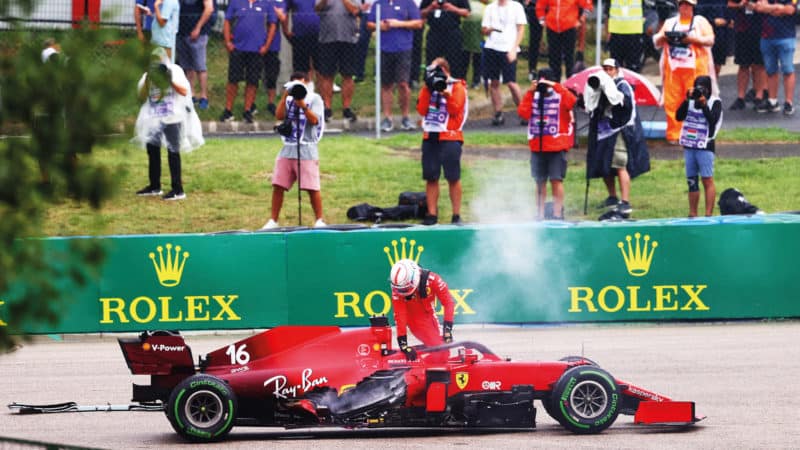
Leclerc gave inspiration for a future Ferrari cutaway feature at Hungary
Which presented a particular dilemma for Mercedes and Hamilton. Being the first garage in the pitlane, with Hamilton sure to be followed in by a queue of cars, he would surely lose many positions before he could be released from his pitbox. Mercedes preferred not to risk it, take the grid start and come in the following lap. That’s what Hamilton did – but he was the only one! So the race started with a single car on the grid; everyone else lined up at the end of the pitlane, on slicks. Hamilton couldn’t pull enough time on the pack on that opening lap and came out a solid last after his stop.
“Vettel was disqualified for being unable to provide a fuel sample”
Ocon now led the race from Vettel – and the Williams of Nicholas Latifi, which had jumped to fifth through the Turn 1 chaos, then made up two further places thanks to Williams being at the far end of the pitlane. The Williams was around 0.5sec a lap slower than the Alpine and Aston, allowing Ocon and Vettel to pull away from the field as Latifi held back those who may have been able to challenge them, such as Carlos Sainz and Fernando Alonso.
Hamilton didn’t really begin making good progress through the field until after he’d been brought in for fresh tyres, stopping one more time than the others giving him the required speed difference to begin passing cars. As Ocon and Vettel continued their tense duel – with Vettel losing an opportunity to undercut in front by a sticking left-rear wheel which cost 1sec – Hamilton was on course to catch them comfortably before the end. Then he came upon his old friend Alonso in fourth place.
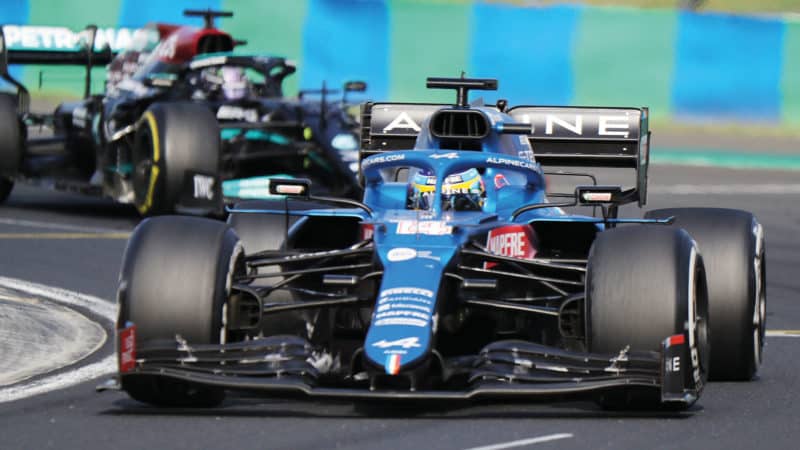
Alonso held Hamilton at Hungary to help team-mate Ocon to victory
“I could see the situation myself,” said the Alpine driver. “I could see on the big screen Esteban was leading, Lewis had been catching at 2sec a lap, so I knew he could be up with them unless I could hold him off.” In that way Alonso helped secure his team the victory. His thrilling wheel-to-wheel dice with Hamilton lasted for 11 laps before the Mercedes finally found a way by. Having worked out an offset line through the final turn, which allowed him to be closer and make better use of DRS. Hamilton was able to repeat that on Sainz to take third, taking the flag virtually touching Vettel’s second-placed Aston as Ocon took the first grand prix win of his career – the first for the Enstone team since Melbourne 2013, two name changes ago. Vettel was subsequently disqualified for being unable to provide a one-litre fuel sample. Williams scored its first points of the season, with Latifi and George Russell eighth and ninth across the line.
Amid the delighted celebrations at Alpine, Toto Wolff tried to apologise to Christian Horner for the Bottas incident but the Red Bull boss didn’t want to hear it, asking if the apology might stretch to paying the damage bill. Tensions remain high.
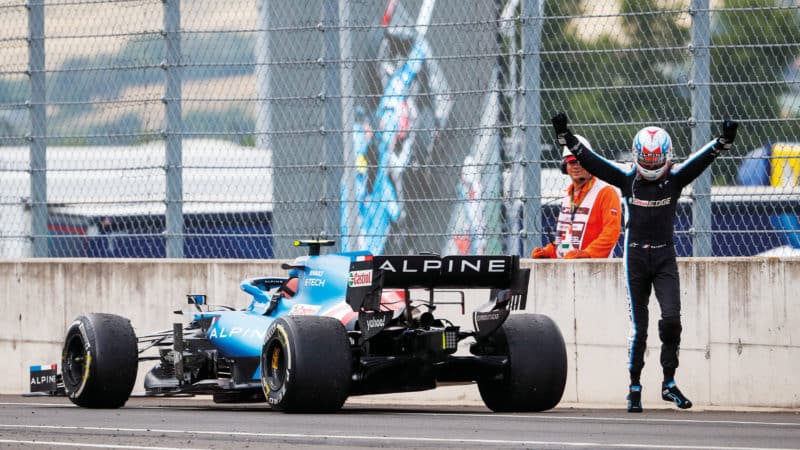
Ocon’s first and only podium came at the 2020 Sakhir Grand Prix; Hungary was his first win since GP3 in 2015
Antonin Vincent / DPPI
